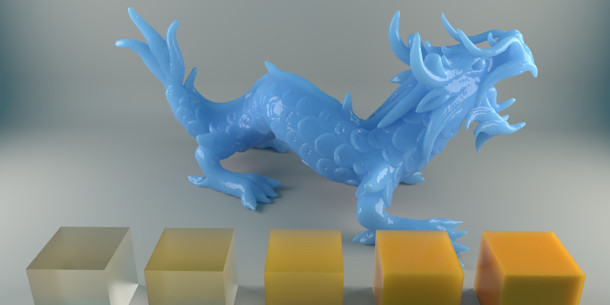Appleseed team releases appleseed 1.9

The appleseed dev team has just released version 1.9 of the open-source renderer, adding support for render denoising, random walk subsurface scattering, camera shutter curves, and a new Pixel Time AOV.
The 3ds Max and Blender plugins also get significant updates: both now support all of appleseed’s OSL materials, and the 3ds Max plugin now supports ActiveShade rendering and render elements.
An open-source physically based renderer with a production pedigree
An open-source physically based renderer founded by former mental images developer François Beaune, we first wrote about appleseed in 2014, when we included it in our summer list of technologies to watch.
Since then, it has moved into beta, and has steadily gained features, including support for Open Shading Language, a multi-layer material based on Disney’s principled BRDF model, and a revamped AOV system.
It also gained integration plugins for 3ds Max and Gaffer, on top of revamped Maya and Blender exporters.
New in appleseed 1.9: render denoising and random walk subsurface scattering
To that, appleseed 1.9 adds a number of advanced features, some of which will be familiar to users of other renderers, and some which seem to be entirely unique to appleseed.
Of the former, the most familiar will be render denoising, although the implementation uses the open-source Bayesian Collaborative Denoiser (BCD) library, rather than a proprietary system or tech like Altus or OptiX.
The release notes contrast BCD – described as being “designed to remove the last bits of noise from [images] rendered with many samples per pixel” – with systems that “basically reconstruct an image from a very small number of samples per pixel”.
Version 1.9 also adds the option to add a user-customisable stamp to renders, and support for random walk subsurface scattering, also recently implemented in Arnold and due in OctaneRender.
Record light paths or render times on a per-pixel basis, or mimic the opening of real camera shutters
More unusual features include the option to record light paths during rendering, as shown above.
It seems to be more of a research tool than a production feature – it’s “part of a larger project where appleseed is being used in an industrial context to analyze how light is scattering on or inside machines and instruments” – but it can be done “without significantly impacting render times”.
Once a render is complete, the light paths contributing to any given pixel of the image can be visualised interactively via an OpenGL render of the scene, or exported to disk in binary format.
The 1.9 update also introduces support for shutter curves, which mimic the way that real-world camera shutters open and close, and the effect that this has on the images they capture.
As well as instantaneous opening – the default for most renderers – users can now choose to simulate a shutter that opens and closes at a constant rate, or one whose speed is driven by an arbitrary Bezier curve.
![]()
There is also a handy-looking Pixel Time AOV, which stores per-pixel render times.
In the resulting greyscale pass (above, right), the parts of the image that took longest to render show up white, while areas that were quicker to render appear darker, helping to troubleshoot or optimise the scene.
The update also marks the start of an ongoing project to “lower the barrier to entry” of the appleseed user interface, removing superfluous parameters, adopting better defaults, and naming settings more intuitively.
Major updates to the 3ds Max and Blender plugins
Outside the standalone version of the renderer, appleseed.studio, the 3ds Max and Blender plugins have been updated and now have “full native support” for appleseed’s OSL shaders.
According to the release notes, all the plugins now expose the same set of OSL materials, creating “exciting new opportunities” for future updates, like exchange of materials, or even entire scenes, between plugins.
In addition, version 0.5 of the 3ds Max plugin adds support for ActiveShade rendering, render elements and true object instancing.
Availability and system requirements
Appleseed 1.9 is available for Windows Vista and above, Linux and Mac OS X 10.10+ under an MIT licence. The renderer is still officially in beta.
Integration plugins are available for 3ds Max 2015+, Blender 2.79+, Gaffer and Maya 2017+.
Read a full list of new features in appleseed 1.9
Read a more general overview of appleseed’s feature set on the project website
